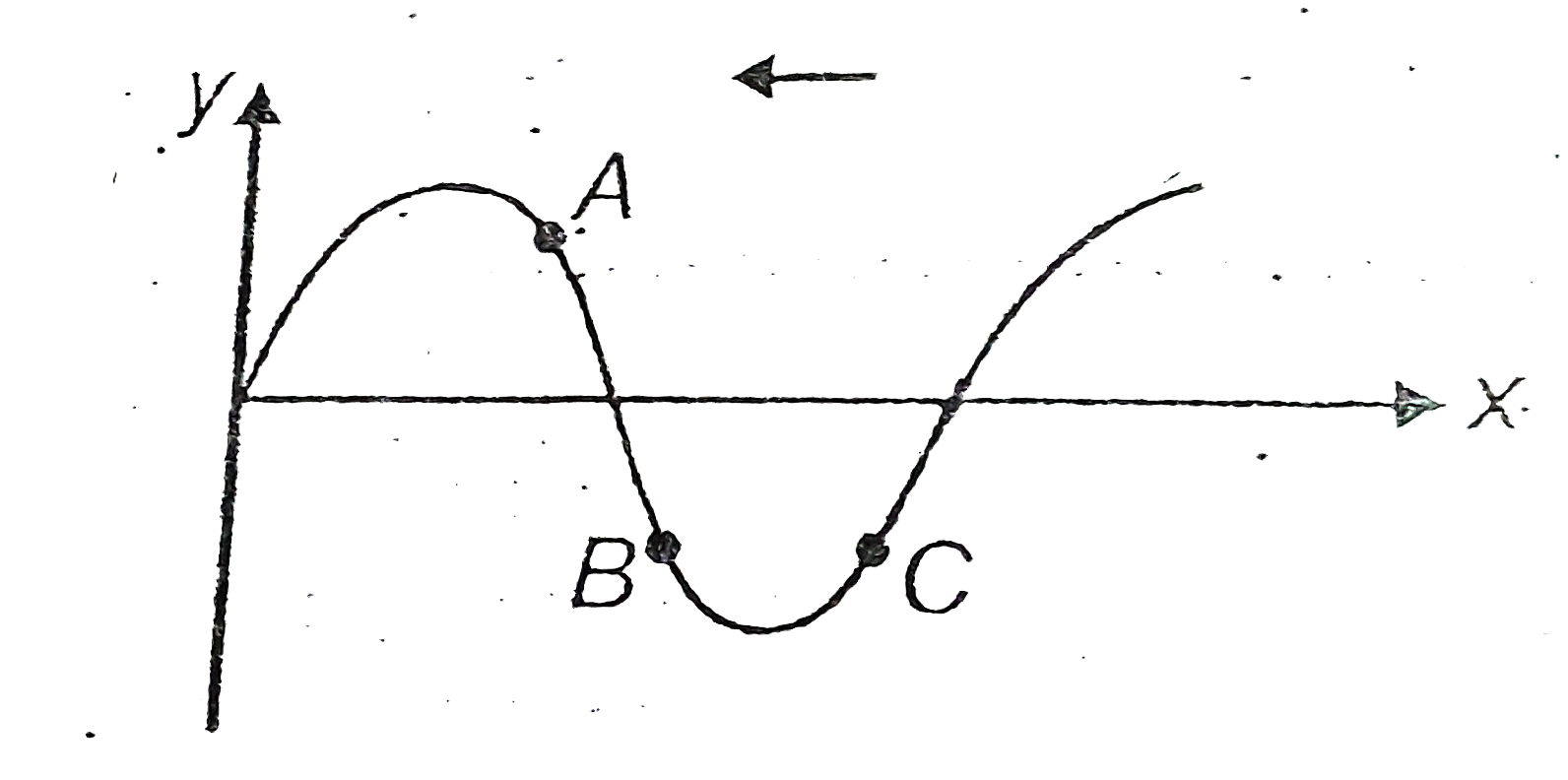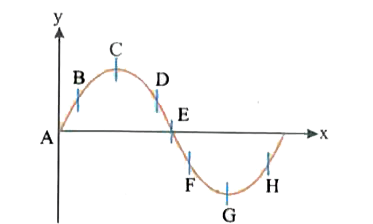The figure shows the y–x graph at an instant for a small amplitude transverse wave travelling on a stretched string. Three elements (1, 2 and 3) on the string have equal original lengths (=Δx). At the given instant-
(i) which element (among 1, 2 and 3) has largest kinetic energy?
(ii) which element has largest energy (i.e., sum of its kinetic and elastic potential energy)
(iii) Prove that energy per unit length ΔEΔx of the string is constant everywhere equal to T(∂y∂x)2 where T is tension the string.

The correct Answer is:(a) 2
(b) 2
Step by step video, text & image solution for The figure shows the y – x graph at an instant for a small amplitude transverse wave travelling on a stretched string. Three elements (1, 2 and 3) on the string have equal original lengths (= Deltax). At the given instant- (i) which element (among 1, 2 and 3) has largest kinetic energy? (ii) which element has largest energy (i.e., sum of its kinetic and elastic potential energy) (iii) Prove that energy per unit length (DeltaE)/(Deltax) of the string is constant everywhere equal to T((del y)/(del x))^(2) where T is tension the string. by Physics experts to help you in doubts & scoring excellent marks in Class 11 exams.
Updated on:21/07/2023Similar Questions
Knowledge Check
Which element has the largest atomic radius?
ABrBKCMgDNaA transverse wave travelling on a stretched string is is represented by the equation
y=2(2x−6.2t)2+20. Then ,Avelocity of the wave is 3.1m/sBamplitude of the wave is 0.1mCfrequency of the wave is 20HzDwavelength of the wave is 1mWhich element has the largest first ionization energy?
ALiBBCNDNa

The figure shows a transverse wave travelling in a string in negative x-axis direction. Three points A, B and C are indicated on the string at the instant shown
The correct statement(s) is/are.
View SolutionWhich element has the largest size in the second period?
View SolutionA transverse wave is propagating on a stretched string of mass per unit length32gm−1. The tension on the string is 80 N. The speed of the wave over the string is
View SolutionA transverse wave is travelling along a string from left to right. The figure below represents the shape of the string at a given instant. At this instant the points have an upward velocity are (here X-wave displacement, Y- particle displacement)

View SolutionWhich of the following elements has the largest - size ions ?
View Solution


